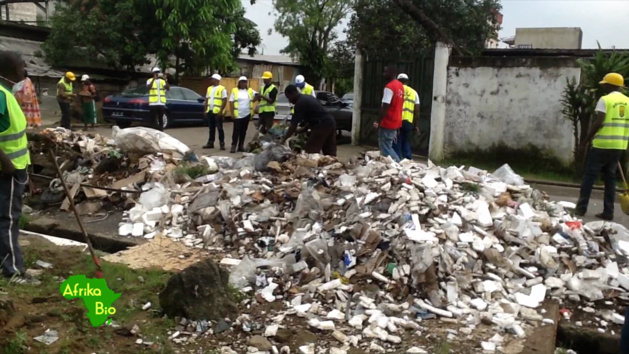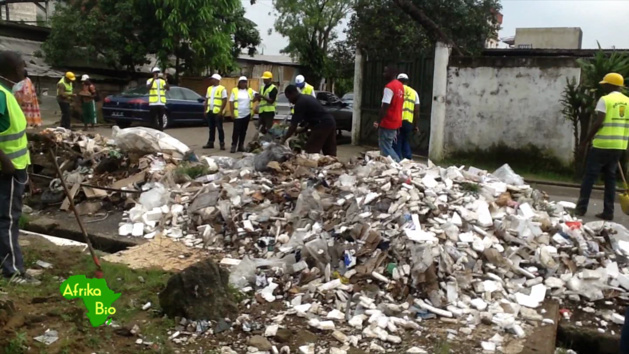
Credits Mathias Mouendé Ngamo
In the last two decades, plastic wraps have been used more and more often by the populations, due to their handling comfort and different functions. But they have as many drawbacks as advantages, if not more, for the populations as well as for the environment. According to a global estimation, published by Chiellini Emo (2006), a researcher and chemistry teacher at the University of Pisa in Italy, plastic wraps account for 35 to 45% of plastic production. In the same publication, the academic affirms that 100 million tons of single-use plastic are made and thrown away around the world every year.
In Cameroon, trash coming from plastic use amounts to around 10% of the 6,000,000 tons of annual municipal waste, in other words 600,000 tons per year. Most of this trash is not well managed because of the lack of efficient recycling and collecting systems and the increase in manufacturers and importers of these plastic wraps. In front of this situation, the MINEPDED – Ministry for the Environment, Protection of Nature and Sustainable Development – carried out a survey in 2011 to do an inventory of the different uses of plastic in Cameroon. This showed alarming conclusions regarding single-use plastic.
Plastic wraps responsible for the disasters
Non-recyclable and single-use plastic wraps can easily fly away and are the cause of fundamental problems of public hygiene. They are partly responsible for the floods in Cameroonian towns because of their obstruction of streaming paths. By blocking water infiltration and consequently preventing plant roots to develop and expand in the ground, these materials take part in the drop in agricultural production. Plastic waste also stimulates the development of disease vectors such as malaria and cholera among others. They are responsible for the deaths of many livestock animals, mainly in the northern part of Cameroon, as a consequence of swallowing.
58% consumers dispose of their plastic trash in nature, 22% hand it to collectors while 20% burn it outside. During his intervention in the Cabinet Council on the 25th May 2015, Cameroonian Minister of the Environment, Hélé Pierre, implemented the joint order N°004 MINEPDED/MINCOMMERCE of the 24th October 2012. This order focuses on the regulation of production, importation and marketing of non-biodegradable wrappings in Cameroon. The Cameroonian government has planned three types of fundamental actions: firstly forbidding 30% of plastic wraps through an appropriate regulation, adding value to 40% of plastic waste by delivering environmental permits to professionals, and destroying the 30% left of non-recyclable waste using incineration.
Hundreds of millions invested in the project
Lemnyuy Albun William Banye, environmentalist and deputy director of MINEPDED, announced that the government’s actions are related to three categories of plastic material: thermoplastic, heat-hardening plastic and elastomer. Forbidden flexible plastic accounts for only 30% of thermoplastic materials produced and used in Cameroon. The collected wrappings are drilled or torn and made unusable, before being stored and finally given to economic operators who ask for permission to recycle. The transfer costs 25, 40 or 50 CFA francs.
The amount of money perceived from these sales is transferred onto the special appropriations account. Unsold plastic is given to relevant structures in order to be destroyed by incineration. Mayors have been invited to vote decisions to assign young people from their municipalities to collect plastic trash in exchange for a salary. Between April 2014 and today, financial means devoted to the activities of the different committees and control boards, as well as the acquisition of new specific equipment (such as micrometers), amount to hundreds of millions CFA francs. In order to assist the economic operators directly affected by this text, the MINEPDED has taken several prominent actions.
One of those taken by the government is to hold consultation meetings with the industrials of the plastics manufacturing field, in order to draw eventual difficulties and suggestions of improvement regarding the arrangements of this joint order. A second action implies receiving during an appointment the members of the AC2P, Cameroonian association of plastics manufacturing professionals, to discuss the difficulties they have come across and find reliable solutions. The last one is to extend the grace period given to enable the sales of the available stock of certain operators.




























